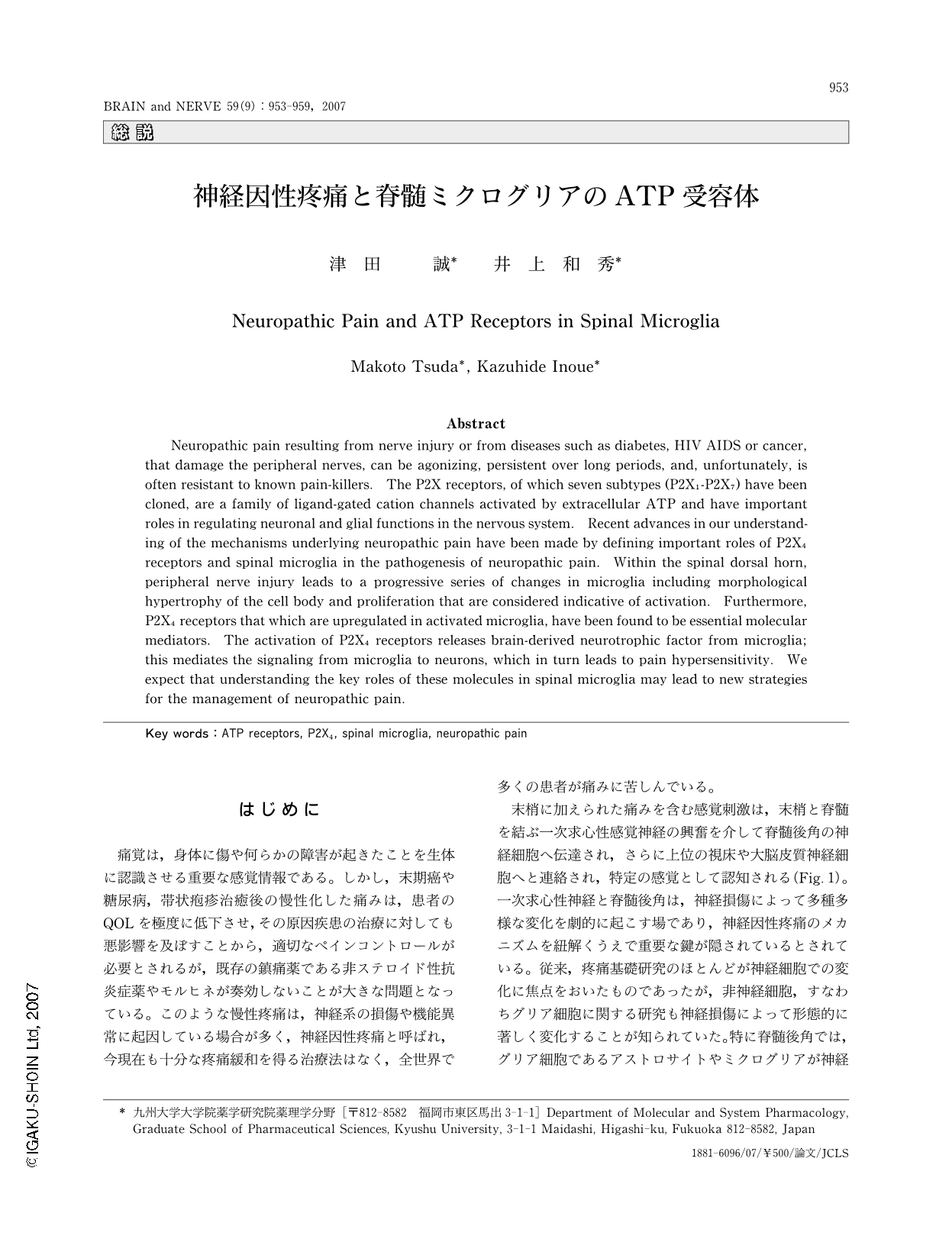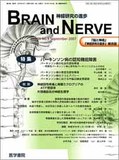Japanese
English
- 有料閲覧
- Abstract 文献概要
- 1ページ目 Look Inside
- 参考文献 Reference
はじめに
痛覚は,身体に傷や何らかの障害が起きたことを生体に認識させる重要な感覚情報である。しかし,末期癌や糖尿病,帯状疱疹治癒後の慢性化した痛みは,患者のQOLを極度に低下させ,その原因疾患の治療に対しても悪影響を及ぼすことから,適切なペインコントロールが必要とされるが,既存の鎮痛薬である非ステロイド性抗炎症薬やモルヒネが奏効しないことが大きな問題となっている。このような慢性疼痛は,神経系の損傷や機能異常に起因している場合が多く,神経因性疼痛と呼ばれ,今現在も十分な疼痛緩和を得る治療法はなく,全世界で多くの患者が痛みに苦しんでいる。
末梢に加えられた痛みを含む感覚刺激は,末梢と脊髄を結ぶ一次求心性感覚神経の興奮を介して脊髄後角の神経細胞へ伝達され,さらに上位の視床や大脳皮質神経細胞へと連絡され,特定の感覚として認知される(Fig.1)。一次求心性神経と脊髄後角は,神経損傷によって多種多様な変化を劇的に起こす場であり,神経因性疼痛のメカニズムを紐解くうえで重要な鍵が隠されているとされている。従来,疼痛基礎研究のほとんどが神経細胞での変化に焦点をおいたものであったが,非神経細胞,すなわちグリア細胞に関する研究も神経損傷によって形態的に著しく変化することが知られていた。特に脊髄後角では,グリア細胞であるアストロサイトやミクログリアが神経損傷によって形態的に著しく変化する(後述)。しかし,それらの神経因性疼痛に対する因果性は長らく謎であった。筆者らは,細胞外ATPとその細胞膜受容体であるATP受容体のサブタイプであるP2X4受容体が,脊髄のミクログリアに発現し,神経因性疼痛に深く関与していることを明らかにした。このP2X4受容体の役割から,それまで疼痛メカニズムに入る余地もなかったミクログリア細胞が,神経因性疼痛における重要な細胞であることも明らかとなり,脊髄ミクログリアのP2X4受容体を中心とした,新しい神経因性疼痛の発症維持メカニズムが提唱されている。そこで本稿では,その新しい疼痛機序について,最近の知見を含めて概説する。
Abstract
Neuropathic pain resulting from nerve injury or from diseases such as diabetes, HIV AIDS or cancer, that damage the peripheral nerves, can be agonizing, persistent over long periods, and, unfortunately, is often resistant to known pain-killers. The P2X receptors, of which seven subtypes (P2X1-P2X7) have been cloned, are a family of ligand-gated cation channels activated by extracellular ATP and have important roles in regulating neuronal and glial functions in the nervous system. Recent advances in our understanding of the mechanisms underlying neuropathic pain have been made by defining important roles of P2X4 receptors and spinal microglia in the pathogenesis of neuropathic pain. Within the spinal dorsal horn, peripheral nerve injury leads to a progressive series of changes in microglia including morphological hypertrophy of the cell body and proliferation that are considered indicative of activation. Furthermore, P2X4 receptors that which are upregulated in activated microglia, have been found to be essential molecular mediators. The activation of P2X4 receptors releases brain-derived neurotrophic factor from microglia; this mediates the signaling from microglia to neurons, which in turn leads to pain hypersensitivity. We expect that understanding the key roles of these molecules in spinal microglia may lead to new strategies for the management of neuropathic pain.

Copyright © 2007, Igaku-Shoin Ltd. All rights reserved.


